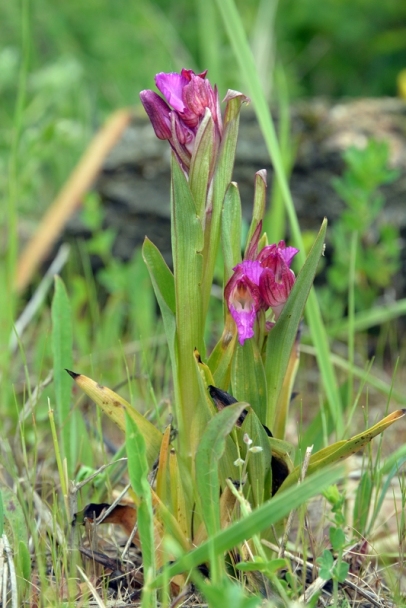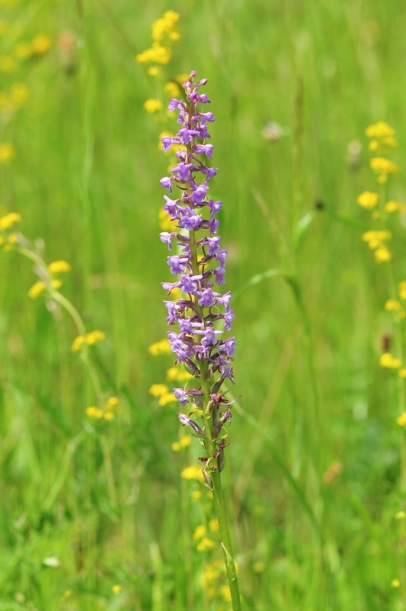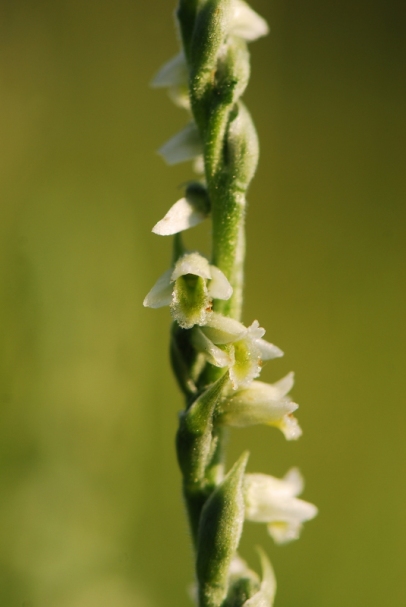Wild orchids
Dry meadows often turn purple during the April and early May. A closer look will reveal that these are the flowers of the wild orchids. Their Slovenian name can be translated as ‘cuckoo flowers’. So far as 79 species of orchids have been found to grow in Slovenia, 16 of which thrive in the Goričko Nature Park area (summarized from Dolinar, 2016). Orchids predominantly occur in meadows, but some genus only occur on forest edges and in forests itself. Due to the acidic soils, the number of species and their diversity is lower compared to other parts of Slovenia. Nevertheless, the orchids habitats are better preserved than in some other parts of Slovenia.
All species of orchids growing in Slovenia are protected and their harvesting or excavation are strictly forbidden. Wild orchids only thrive on non-fertilized, desolate soil, as they live in symbiosis with fungi.
Meadow orchids
The most videly distributed and common is green-winged orchid (Orchis morio). This orchid can occur in high densities and numbers. The color of flowers can vary from dark violet, rose to white. This up to 15 cm high orchid begin to flower in April. Green-winged orchids are pollinated by bumblebees.
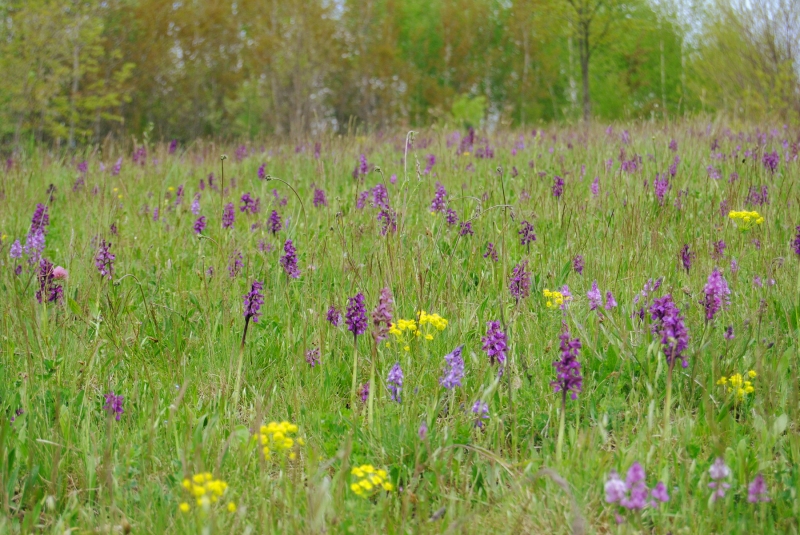
Green-winged orchid can occur in different color varieties ![]() M. Podletnik
M. Podletnik
Burnt orchid (Neotinea ustulata) is rarer but still quite common on dry meadows in eastern part of Goričko. The Latin name "ustulus" - slightly burnt and therefore also the English name derives from the color of the unopened flowers at the top of the flowering spike which are dark purple and therefore appearing burnt. Opened flower are white with dark purple dots. This small orchid can be difficult to spot, but once you find one, you find ten. Often they tend to grow in small clumps. The flowers smell of honey.
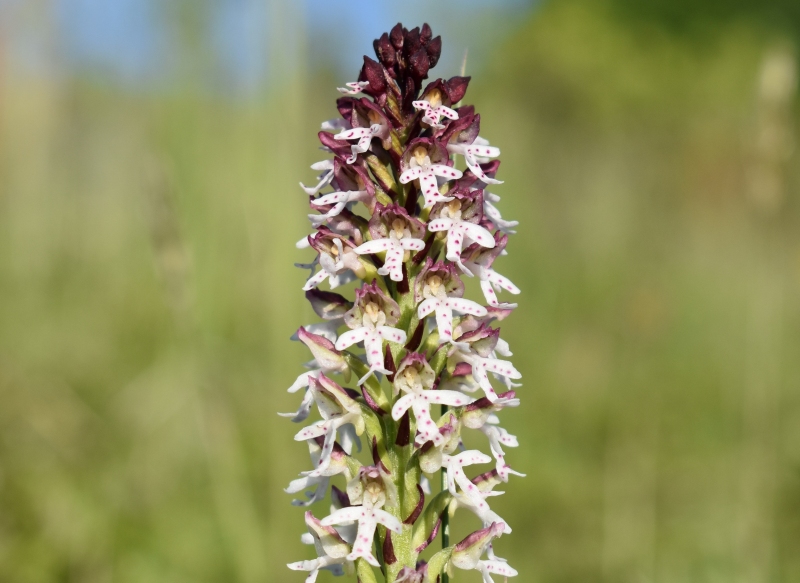
Burnt orchid name derives from the dark purple coloured tops ![]() M. Podletnik
M. Podletnik
Butterfly orchid (Anacamptis papilionacea) grows on only one known site in Goričko. Rare is fragrant orchid (Gymnadenia conopsea). In May on wet meadows violet flowers of the broad-leaved marsh orchid (Dactylorhiza majalis) can be found in relatively large numbers. Leaves have a distinctive dark red patches. In the autumn lady’s-tresses (Spiranthes spiralis) on dry meadow, in the high-trunk orchards and road edges begin to flower. Autumn ladys-tresses needs more than 10 years to begin flowering. The flowering stalk is grey-greenish, most often up to 20 cm high. Small flowers are white with a green spot on the lower lip. The flowers are arranged in a helix around the upper half of the flowering stalk. This distinctive trait gave the orchid Slovenian name "zavita" what means "curved". Leaves are wide, oval and form a rosette. Flowers spread a fragrance.
Flowers are placed in 360-degree angle around flower stalk ![]() M. Podletnik
M. Podletnik
Forest orchids
The higher variety of species is represented within predominately forest species of orchids. In the forests thrives one of the four saprophytic orchids, bird’s-nest orchid (Neottia nidus-avis). It lacks the green chlorophyll in the leaves and therefore cannot photosynthesize. It gets all of the nutrients from the symbiosis of fungi.
On the forest edges up to 80 cm high broad-leaved helleborine (Epipactis helleborine), violet helleborine (Epipactis purpurata), pontian helleborine (Epipactis pontica) and Mueller’s helleborine (Epipactis muelleri) occur. Voethi’s helleborine (Epipactis voethii) can be found only in Goričko and in Slovenske Gorice. Narrow-leaved helleborine (Cephalanthera longifolia) and white helleborine (Cephalanthera damasonium) thrive on the forest edge and in forest clearings. Lesser buttefly-orchid (Plantanthera bifolia) and greater butterfly-orchid (Plantanthera chlorantha) can quickly be mistaken for each other due to their similar appearance and growing in similar habitats, as both species are found in meadows and in light forests.
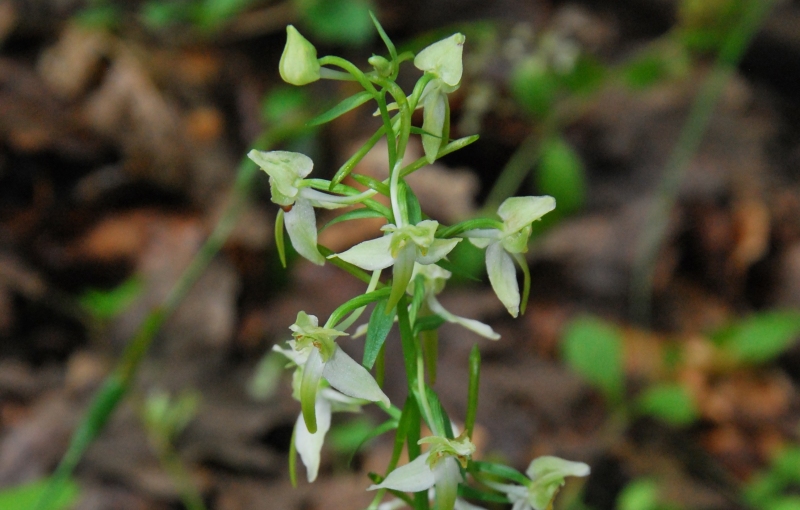
Lesser butterfly-orchid ![]() G. Domanjko
G. Domanjko
Common twayblade (Listera ovata) similarly thrives predominantly in forests and on forest edges.

